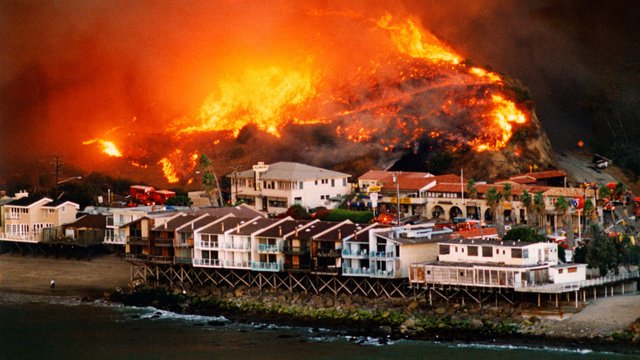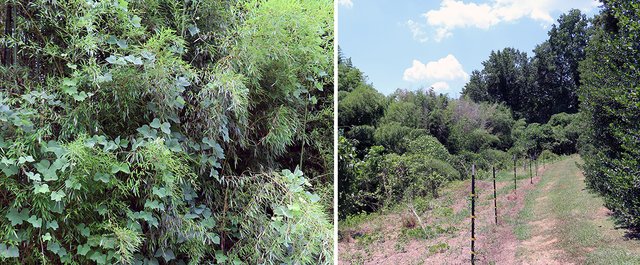Fighting Fire with - Goats?
I was reading one of my favorite travel bloggers yesterday and was delighted to see a picture of several goats peacefully munching away on a city street, keeping the landscaping neatly trimmed and free of brush and brambles. A few hours later I heard from a friend of mine who had his home burned out in the recent California wildfires asking if I still had a copy of a favorite picture that had gone up in flames. It was the last one taken of him and his father, and thankfully I did still have it saved on a drive.

The two random events got me thinking as I headed to the goat pens for their evening feeding. Why aren't we using more goats to cut down the fuel that the fires need to feed on? We use goats around the farm to chomp down weeds and thistles, tethering them to a stake where they can easily reach what to them is a delightful meal. Goats are funny creatures. They actually LOVE woody, brambly, stemmy sorts of vegetation and when added to their diet it seems to really help their digestion and their overall health.
Goats can go where it is difficult for humans to reach - even the most impenetrable thicket of underbrush can't keep a goat from it's lunch. They're marvelously efficient and can eat a great deal of "trash" vegetation in a days worth of goat munching. The University of Arkansas has calculated that 10 goats can clear an acre in a month. They are really efficient at the job as well, as the before and after image from Clemson University below shows.

Using goats to clear weeds and brush also cuts down on the environmental impact of commonly used herbicides. Some cities such as Pittsburgh, San Diego, San Francisco and Calgary have used goat herds to successfully clear parks and other areas of noxious weeds safely, effectively and in an environmentally sound fashion. In the South, kudzu is an enormous problem. In the heat and humidity it grows rapidly and kills off trees and other plants as it chokes them with it's tendrils. The city of Atlanta and other southern areas found that goats were a very effective answer to keeping areas kudzu-free. Goats vs Kudzu
Spain is using goats for forest fire prevention in a pilot program in the Girona region of northern Spain.
While there are small pockets of forest management areas being tended by goats here in the U.S., rapidly advancing climate change, coupled with beetle infestations that make entire forests more vulnerable to burning would seem to indicate that our efforts should be stepped up. Here are some staggering statistics just from the 2018 fire season and ONLY in California. While California wildfires dominated the headlines, many other states also were devastated in last years wildfire season.
The 2018 wildfire season is the deadliest and most destructive wildfire season on record in California, with a total of 8,527 fires burning an area of 1,893,913 acres, the largest amount of burned acreage recorded in a fire season, according to the California Department of Forestry and Fire Protection (Cal Fire) and the National Interagency Fire Center (NIFC), as of December 21. The fires have caused more than $3.5 billion in damages, including $1.792 billion in fire suppression costs. Through the end of August 2018, Cal Fire alone spent $432 million on operations. The Mendocino Complex Fire burned more than 459,000 acres, becoming the largest complex fire in the state's history, with the complex's Ranch Fire surpassing the Thomas Fire and the Santiago Canyon Fire of 1889 to become California's single-largest recorded wildfire. Wikipedia
Deploying the hooded weed and brush eating machines that are goats might not have prevented these deadly and expensive blazes, but there is little doubt in my mind that if goats were made a part of forestry management they would certainly help limit the size and severity of these fires.